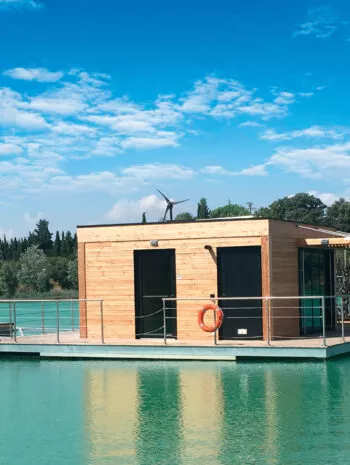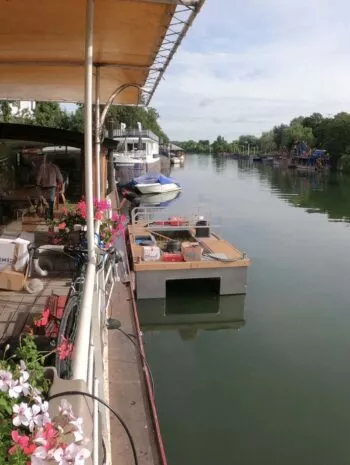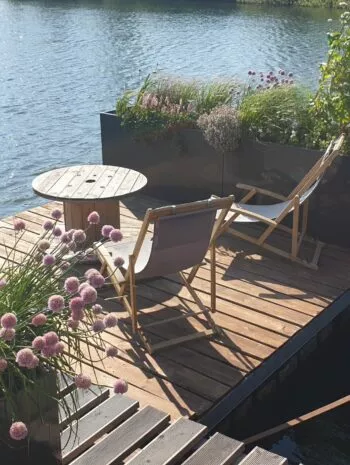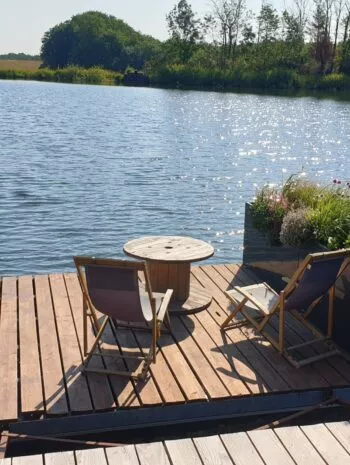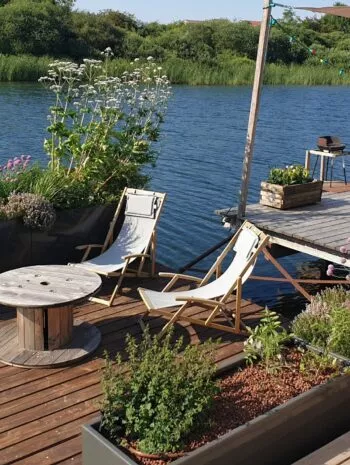PhytoIsland
Floating house, barge or floating tourist accommodation, the PhytoIsland purifies your wastewater by phyto-purification and adapts to your aquatic environment.
Floating houses and dwellings are very much in vogue at the moment. They are tending to develop a lot due to the search for an alternative lifestyle by a large section of the population. While their advantages are undeniable, the management of wastewater in these dwellings not connected to a sewage system is not always easy. If you are looking for an effective purification system for your houseboats, barges or floating holiday homes, Aquatiris, a leader in the field of phyto-purification, presents its innovative solution: the PhytoIsland.
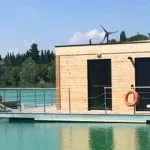
The PhytoIsland, for the ecological treatment of your wastewater
A genuine adaptation of the Sanitation Gardens to floating homes, the PhytoIsland is the first green and ecological system for individual and recreational floating homes. Would you like to clean up your floating home in an environmentally friendly way? Are you looking for a system that will allow you to recycle water by purifying it before discharging it into the surrounding lake or river? Better still, would you like an aesthetic sanitation system that blends in perfectly with your environment? If so, let yourself be tempted by our system, which was entirely designed and developed in France.
The PhytoIsland makes it possible to optimise the environmental performance of sanitation by focusing on the use of bio-based materials. Highly versatile, it can be connected to any type of floating accommodation (floating accommodation and restaurant, barge, etc.). It can also be used for the treatment of wastewater from ports. Its substrate is composed of gravel, reeds and other aquatic plants, sand and grit. This is what allows the filtration of wastewater.
In practice, water soluble pollutants are digested by the micro-organisms and bacteria that surround the plant roots. The residual nutrients are recycled as they will be used by the plants. The non-soluble materials are retained on the surface and then composted. The water, now free of any trace of contamination, is returned to the aquatic environment where it no longer presents any danger.
A flexible system that can be adapted to the dwelling
One of the great strengths of the PhytoIsland is its great flexibility. It can be easily adapted to the type of housing in place. There are several models of the PhytoIsland: integrated, annex and terrace.
With the integrated PhytoIsland, the treatment is carried out under the floating housing and in the plant boxes. In this case, the system forms an embellishment space on the pontoon of the dwelling.
On the other hand, with the PhytoIsland with an annex, the treatment is carried out under a floating and vegetated annex. The system then becomes a refuge for water birds and a breeding ground for fish.
With the PhytoIsland on a terrace, filtration takes place in an annex under a terrace and around the edge in the plant boxes. It is a fully-fledged living space.
Principle
Phyto-purification: a system of wastewater treatment using reed and aquatic plant planted filters, enabling the purified water to be returned to the natural environment.
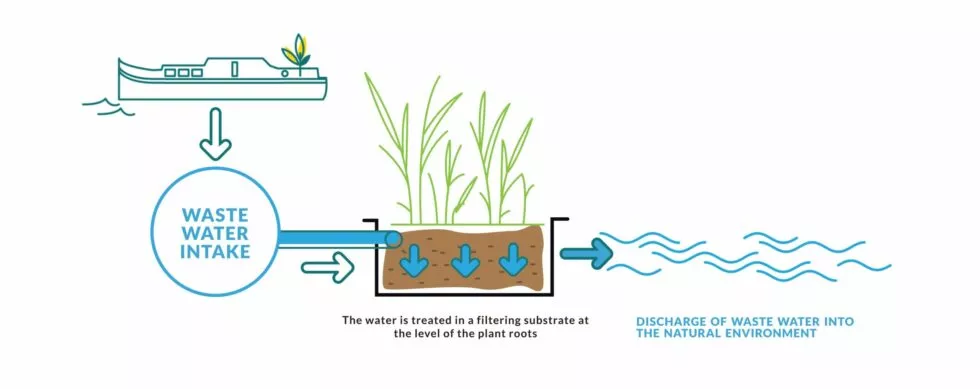
The PhytoIsland, a system with many advantages
The PhytoIsland is a sanitation system with many advantages. First of all, this solution is environmentally friendly since it uses no chemical reagents. It is also very practical, requiring neither a tank nor emptying. Furthermore, the compost formed from non-soluble pollutants can be recovered on site and does not cause any unpleasant odours. This is a real bonus for the comfort of residents.
Similarly, the PhytoIsland is an economical solution as it has low running costs. Durable and aesthetic, it also blends in well with your landscaped environment. What’s more, when it comes to maintenance, the PhytoIsland is far from being capricious. It only requires gardening care which is quite simple to carry out.
Finally, this individual sanitation system for floating homes is efficient all year round, autonomous and also shows excellent durability. This system will therefore accompany you for many years.
